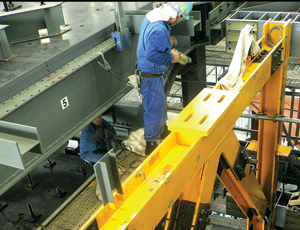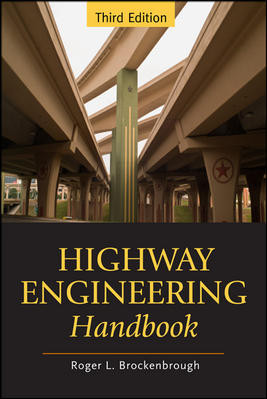Performance-based seismic design is on a roll, thanks to recent, first-of-their-kind shake-table tests that proved the viability of a “rocking” braced frame that moves seismic design beyond life safety toward build-for-repair. The steel frame not only survived shaking that was 1.75 times stronger than the Northridge earthquake, it returned to its original plumb position after shaking, thanks to post-tensioned strands. Damage was limited to a replaceable fuse, as planned.
The objective of the research is to develop tools for seismic engineers to design structures for repair, says Gregory G. Deierlein, lead investigator for the $1.4-million project, called “Controlled Rocking of Steel-Framed Buildings With Replaceable Energy-Dissipating Fuses,” funded primarily by the National Science Foundation. “The structure will be safe, intact and plumb” after a major quake, adds Deierlein, director of the John A. Blume Earthquake Engineering Center at Stanford University, Stanford, Calif.
Deierlein and his co-investigator, Jerry Hajjar, a professor of engineering at the University of Illinois, expect to produce design guidelines for the system within a year. From these, standards developers could begin working on language that eventually could be in the model codes.
The engineers also intend to translate system criteria so the concept can be applied to other framing materials, including concrete, wood and masonry. “One would still have to test specific components” of other materials, but the concepts are valid, says Deierlein.
Seismic engineers in practice generally support the effort because the system offers better and more reliable seismic performance compared with almost any conventional structural system. But they are concerned about cost premiums associated with the system and the acceptance of the system by code officials. “Whether any such system will have a big impact on the building industry will ultimately depend on its cost and schedule impacts compared to more conventional construction,” says Joe Maffei, principal, Rutherford & Chekene Consulting Engineers, San Francisco. “But to even get going, an engineer needs to be an early adopter and champion of the system, and building departments need to accept a nonprescriptive seismic design,” he says.
The system consists of a braced frame designed to rock up and down, with a fuse for energy dissipation and vertical post-tensioning for self-centering. The braced frames and post-tensioning are designed to remain elastic, while the frame rocks on its base and dissipates energy in the fuse, which is bolted in.
The shake table didn’t have a concrete footing to support the frame’s column bases. But in practice, a concrete footing would have a rectilinear pocket, 6 in. to 8 in. deep, in which the column would rest. The pocket would be lined with steel plates, like a bumper. There would be no bolt to the base plate. This would allow the column base to rock in a controlled manner in the pocket. Deierlein compares the system to a grounded sumo wrestler, rocking from side to side.
The fuse consists of stacked links made from steel plates, 6 millimeters to 22 mm thick, cut into a butterfly shape using water jets. The size, thickness, number and geometry of each link can be tailored to the specific design, says the researcher.
In the strongest shaking, which took place on the world’s largest shake table, at the Earthquake Defense facility at...






















